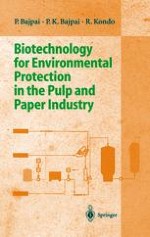1999 | OriginalPaper | Chapter
Wood Pretreatment to Remove Toxic Extractives
Authors : Dr. Pratima Bajpai, Dr. Pramod K. Bajpai, Prof. Dr. Ryuichiro Kondo
Published in: Biotechnology for Environmental Protection in the Pulp and Paper Industry
Publisher: Springer Berlin Heidelberg
Included in: Professional Book Archive
Activate our intelligent search to find suitable subject content or patents.
Select sections of text to find matching patents with Artificial Intelligence. powered by
Select sections of text to find additional relevant content using AI-assisted search. powered by
Environmental research on the aquatic impacts of pulp mill effluents has been concentrated in Scandinavia and North America. In the 1970s, the regulatory framework covered conventional parameters such as biochemical oxygen demand, suspended solids, and nutrients. From the 1980s until today, concern has been directed towards chemical toxicity. It has been claimed that the organic materials in the effluents from pulp mills cause a number of biological effects. These suspicions have prompted intensive research to study relationships between exposure and effects, as well as profound process changes within the pulp industry. Chemical toxicity analysis has been performed at various levels of biological organization: community, population, individual, organ, tissue, cell, subcellular, and molecular. Many studies performed on pulp mill effluents have focused upon within-organism effects on physiology and biochemistry.1 Despite the profound process changes in the industry, there is still evidence of physiological changes in organisms exposed to mill effluent. However, the ecological significance of these responses is unknown; in large part they are provoked by lipophilic compounds present in the wood entering the mill (extractives) rather than by materials formed or modified during pulping or bleaching.
